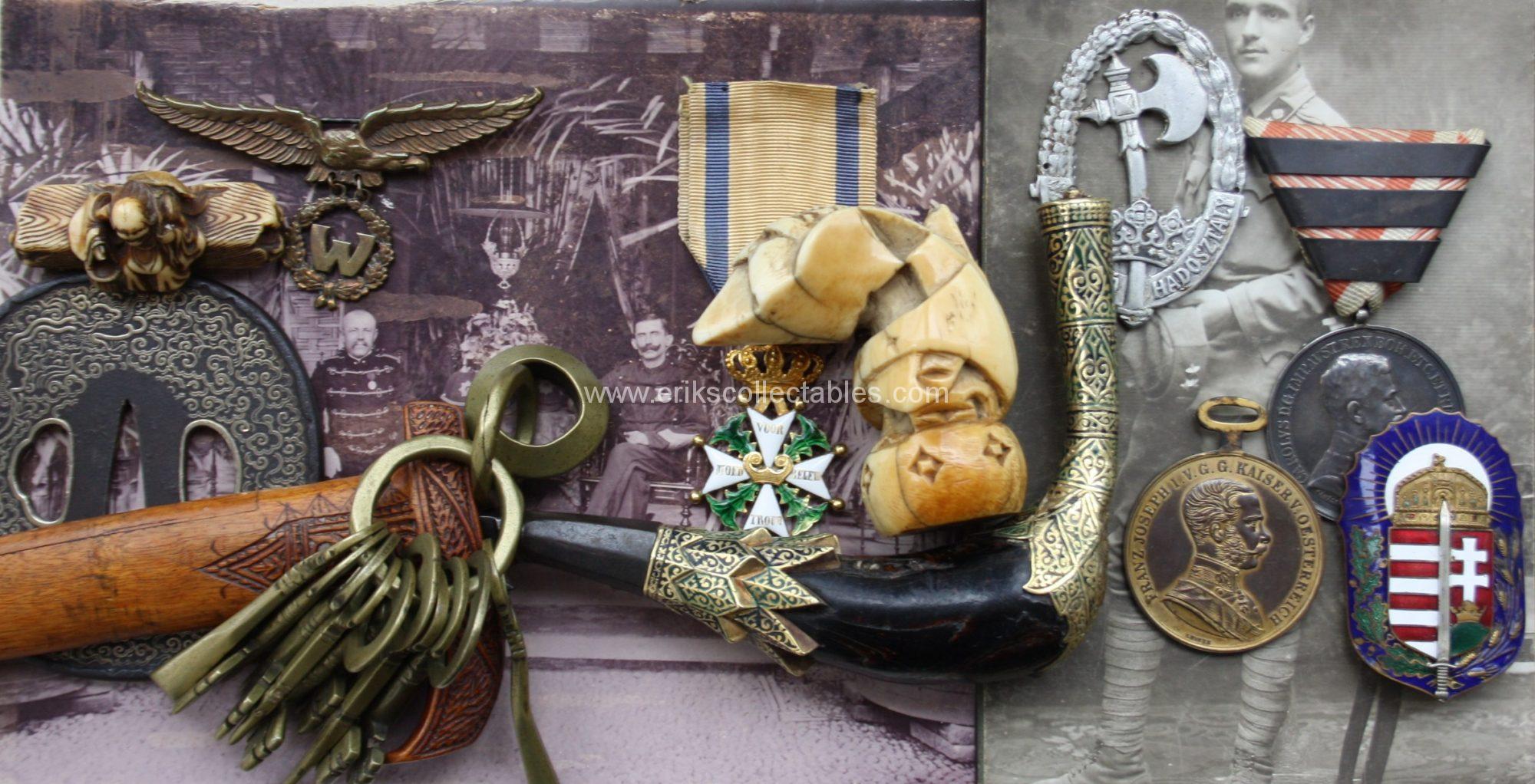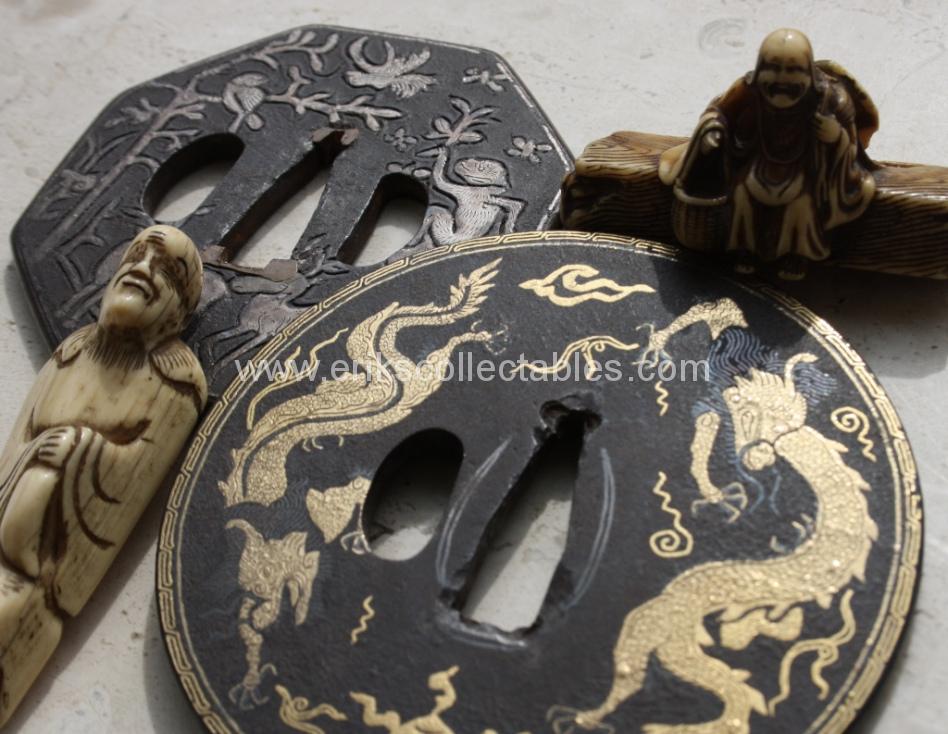For a long time I have been very interested in Japanese applied arts, netsuke, inro and tsuba’s mainly. Although I stopped collecting such items actively I still bought these 4 items from a friend.

The provenance wat too interesting to let them pass by. The friends grandfather was Professor Dr. C.C. Krieger. He collected these items in the first half of the 20th century when he was the Conservator for the Department of Japan, China and mainland Asia in what today is the Ethnographical Museum (Rijksmuseum voor Volkenkunde) in Leiden. He held this position from 1927 up to his retirement in 1949.
In 1935 he promoted to PhD in the Japanese language and the same year he became professor in the same subject at the Utrecht University. In 1947 he was promoted to special professor (bijzonder hoogleraar) in the art and history of the Far East including the Japanese language, a position which he held upon his final retirement in 1954, aged 70.

Dunhill-Namiki fountain pen
About 20 years before I had already received his fountain pen as a gift for my collection. Being a specialist in the Japanese language and art he obviously wrote with a luxurious Japanese lacquer pen. It was a Dunhill-Namiki, a cooperation between the famous London retailer of smoking utensils Dunhill and the Japanese pen company of Namiki (the current Pilot). These Namiki pens are famous for the lacquer (maki-e) of high quality and also were made by famous artists. Dunhill retailed them in the Western world. In this case the pen was used intensively. It is a rare pen as a size 20 (the biggest they made apart from the jumbo size 50) in a period that watches and pens were still small in general. A very appreciated gift and still one of my favorites!


His extensive collection of Japanese art was divided between his 3 children, amongst which the mother of my friend. She held on to the inheritance and after her death her two daughters inherited the collection and I was happy to gain these 4 objects from his original collection.
Netsuke
Two netsuke, toggles for the inro. One a relatively crude depiction of a foreigner and the other a depiction of a famous Japanese tale.
Nanban Tsuba
The other two items are tsuba or handguards for the Japanese swords. In this case foreign imported items most probably and adapted for Japanese use. In Japan these are called nanban. If the professor had a special interest in Japanese items with a different origin or depiction of foreigners is not known. Below a short description I received regarding these tsuba.
Martial arts meet the decorative arts. The round guard looks Chinese, Ming in style, but possibly a later revival piece. Note the voal delinaeation of the washer-seat on one side, which on the opposite side is rectangular. More study is required to determine the date of manufacture.
The octagonal one may be Korean. In both cases, these guards have been adapted to Japanese use. Unfortunately, the addition of hitsu-ana has defaced the original design. The condition appears to be outstanding.
Damascened guards do no fare so well under heavy use. Neither of these guards seem to have been worn “in the field”. Both were well cared-for by previous owners. Their preservation today is thanks to the uniquely Japanese culture of appreciating sword-parts as works of art in their own right.
Dr. Krieger and the War against the Japanese
Even though the items are not military in essence there is a small link to a military history due to the person of the original owner!
In the 1930s Japanese influence in Asia was expanding and felt threatening for most Western powers in the region. The Dutch with their presence in the Dutch East Indies were part of this fear. The actual extend of the threat would finally become clear with the start of the war against the Japanese from Pearl Harbour onwards.
In these 1930s the Dutch Military Intelligence already worked on breaking the codes the Japanese used for their international communications. What I was not aware of when I started this blog is that Dr. Krieger actually was part of this effort!
A collecting friend has several items in his collection that relate to this subject and he brought this fact to my attention. It is even mentioned in the book by Robert Haslach about the subject. The dutch Naval officer Nuboer asked for the help of Krieger (also a former Naval officer!) in his effort in breaking the Japanese codes in 1934. Nuboer would eventually be successful in his efforts! You can read some more about him here.
The friend has in his private collection a Naval uniform of Nuboer and a tropical suit that belonged to Krieger. Here some pictures of the Nuboer uniform.
How Nuboer and Krieger came into contact is not yet clear and subject of further research I want to do. What is clear that the help of a former Naval officer with extensive knowledge of the Japanese and their language was valuable to the Dutch Forces.
This was formalized in 1937. Henri Koot, the head of military intelligence requested his official help. Krieger would become, next to his job as Curator of the Asian department of the Leiden Ethnographical Museum, member of the General Staff of the Army in The Hague. His work would only end after the German occupation in 1940. Due to the secrecy of the job and the subsequent war little is known about this period but it will also be subject of further research!
Sources:
- http://resources.huygens.knaw.nl/bwn1880-2000/lemmata/bwn4/nuboer
- https://profs.library.uu.nl/index.php/profrec/getprofdata/1188/147/183/0
- https://nl.wikipedia.org/wiki/Henri_Koot
- https://en.wikipedia.org/wiki/Synchronicity
- Private collection including Krieger suit from the collection of the late Sjoerd Douma and Nuboer Naval uniform
- Robert Haslach; Nishi No Kaze Hare












